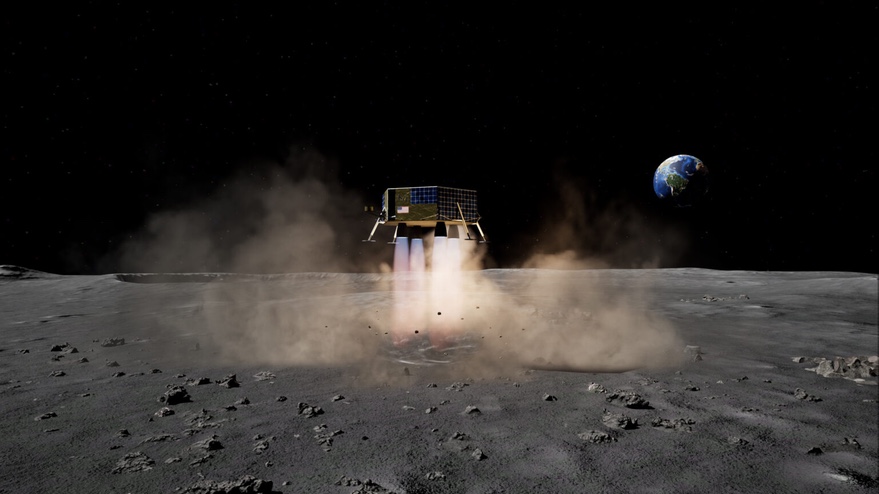WASHINGTON — Masten Space Systems is pushing back the launch of its first lunar lander mission by nearly a year, the latest in a series of delays by companies with NASA contracts to transport payloads to the moon.
Masten said June 23 that its Masten Mission 1 lander, which had been scheduled to launch in December 2022 to land near Haworth Crater in the south polar regions of the moon, will instead launch in November 2023. The company blamed the delay on the cumulative effects of the COVID-19 pandemic and industry-wide supply chain issues.
“We’ve all been impacted by the pandemic in some way, and the aerospace industry is no exception,” Dave Masten, founder and chief technology officer, said in the company’s announcement of the delay. “However, we’ve consulted with NASA, our launch provider and payload partners, and we have full confidence in the new mission schedule.”
Masten won a NASA task order as part of its Commercial Lunar Payload Services (CLPS) program in April 2020 for the mission, valued at $75.9 million. Masten will deliver a set of NASA science and technology payloads, with room on the lander for additional commercial payloads. Masten contracted with SpaceX to launch the lander, a design the company calls XL-1.
“Our team continues to make progress on XL-1 development and achieve important milestones that will help ensure a safe, precise landing near the resource-rich Haworth Crater,” Dave Masten said. One advantage of the delay, the company added, is that there will be reduced shadowing from terrain during the new landing period, a key issue in polar regions where the sun is low on the horizon.
NASA confirmed it was aware of the delay in the Masten lander mission. “Masten has notified NASA it’ll delay the delivery by 12 months due to COVID-19 impacts that pushed past the current launch window,” Thomas Zurbuchen, NASA associate administrator for science, tweeted. “NASA Payloads will be ready when Masten is able to launch safely.”
Masten is one of four companies that have received a total of six CLPS task orders that NASA has awarded to date. Two other CLPS companies have also suffered delays in their initial lunar lander missions.
Intuitive Machines confirmed in April that its IM-1 lander mission, which had been scheduled for launch in the fall of 2021, had been delayed to early 2022. The company said SpaceX, its launch provider, delayed the launch because of “unique mission requirements” that neither Intuitive Machines nor SpaceX would disclose.
Astrobotic’s Peregrine lunar lander had also been scheduled to launch in late 2021 as the payload on the inaugural launch of United Launch Alliance’s Vulcan Centaur. However, ULA has said in recent weeks that the first Vulcan launch had been delayed to 2022 because of customer payload delays.
While Astrobotic hasn’t made a public announcement about the schedule for Peregrine, John Thornton, chief executive of the company, told SpaceNews June 23 that the mission is now scheduled for launch in 2022.
“I commend our team for their incredible work and perseverance through what we can all agree was a tough year,” he said. “Many businesses and supply chains were affected by COVID, and Astrobotic is no exception. We’re optimistically moving into 2022 together with the same tenacity we’ve always possessed.”
